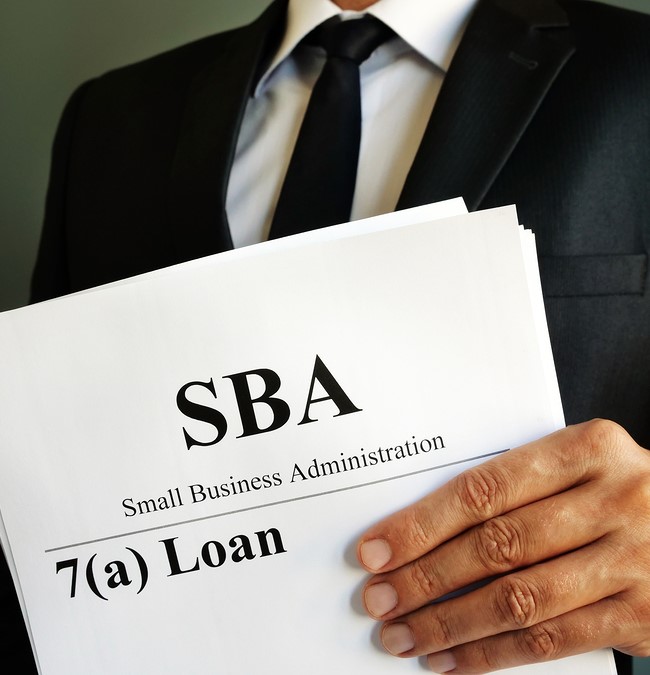SBA Loan Program Overview
The Small Business Administration offers myriad loan programs to help small business owners obtain the necessary financing to keep firms going strong. In most cases the SBA doesn’t exactly disburse loans directly, but rather provides lenders with federal guarantees and banking. When you apply for a product from the SBA, you will be going through a financial institution like a bank or a non-bank lender.
For this reason, there are no hard and fast terms on these loans, as the SBA will define certain maximum and minimum amounts, as well as other specifications. The financial institution that is providing the actual funding will establish the more specific requirements and terms of the loans. However, SBA-backed loans are often characterized by lower down payments, longer terms and more flexibility than other offerings. Further, they may be preferble from the perspective of the lender because of the federal backing.
What you need to acquire loans in this program will vary by lender and must adhere to SBA Eligibility Requirements. This ranges from collateral to credit ratings and the amount of cash equity that should be injected.
The SBA7(a) Loan: SBA’s Flagship Product
The SBA7(a) Loan Program serves as an umbrella for several sub-programs, each with different specifications, uses and benefits. This includes products from the Export Loan Programs, Rural Business Loans, Small Loan Advantage (SLA) and express and Pilot Programs.
As the SBA7(a) contains several different products, the common uses vary for each. However, the most common uses of loans under this program include working capital for various purposes, machinery and equipment, commercial (owner user) real estate. Borrowers can use the loans for existing firms as well as start-up ventures.
The common loan terms for SBA7(a) loans are the following:
When used for working capital – 7 year maximum
When used for machinery and equipment – 15 year maximum
When used for real estate – 25 year maximum
While specific financial institutions will iron out the finer points, the SBA sets specific maximum interest rates that vary depending on the amount disbursed. Currently the maximum interest rate allowed under the flagship 7(a) program is Prime + 2.75 percent.
SBA Microloan and new Small Loan Advantage (SLA Program): A Startup Favourite
The SBA’s Microloan Program is a bit more directed than the massive 7(a) umbrella, as loans contained within are meant to be distributed quickly and used for short-term needs. However, the pool of lenders that can distribute these loans is markedly small than other programs because the SBA dictates that the must be “specially designated intermediary lenders.” The agency demands these organizations have a good track record with technical guidance and lending to small businesses.
Loans through this program are especially useful for startup businesses. Not only because of the actual terms, but because he SBA requires the intermediary lender to offer support, guidance and technical assistance to the borrower. In some cases, the small business owner will have to attend mandatory training sessions with the lender before and after the loan application process.
These loans can be used for several purposes, such as working capital, machinery and inventory purchases. The purposes will often dictate the interest rates and other specifications of the loan.
Specific terms and for micro loans vary by lender, size of the loan as well as what you intend to use the financing for. However, microloans have a maximum size of $50,000. The SBA cites the average amount as $13,000. The maximum term, as dictated by the SBA, is six years.
Most lenders will require a personal guarantee, a specific credit rating and some form of collateral for loans under the microloan program.
Pre-Qualify for a SBA Loans
Have Questions?
SBA Specialist
MIKE CONSTANT
913.302.3292

SBA 504 Loan Program Financing for Assets
The SBA 504 Loan Program is a popular choice for commercial real estate financing. Commonly used for building and land purchases, equipment costs and renovations, the program offers financing for up to 90 percent of the total project cost, leaving the business with only a 10% equity injection.
In order to qualify to an SBA 405 loan, the small business owner must plan to use 51 percent of the property for its own purposes within 1 year of the project.
The SBA partners with Certified Development Companies (CDCs), which are community-based lenders, and traditional lenders like banks. The CDC provides 40% in the form of a debenture which takes a 2nd position on the assets being financed, while the bank provides 50% financing in 1st position.
The SBA 504 Loan Program is also popular because it offers long-term loans at a fixed rate. Since these loans will often be taken out in higher amounts because of the popular uses, especially construction of new facilities and renovations, they allow small business owners to make big moves for their company without very harsh interest rates 10 or 20 years down the road.
Basic Acquisition Checklist Needed for SBA Pre-Qualification
Business Loan
3 Years Business Tax Returns
Interim Financials for the current year (P & L Statement and Balance Sheet)
Business Debt Schedule
Project Cost Breakdown
Personal (anyone who owns 20% or more of the business)
3 years Personal Tax Returns
Personal Financial Statement
Personal Credit Score